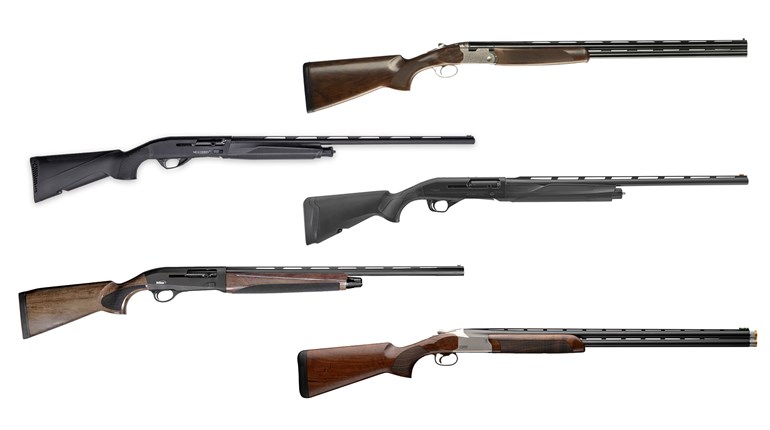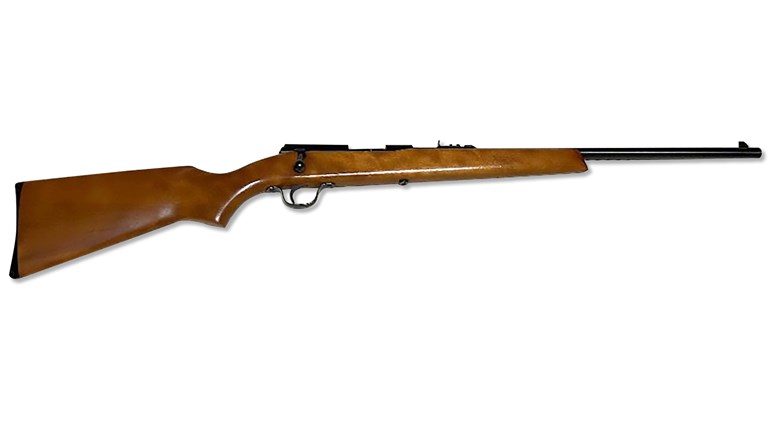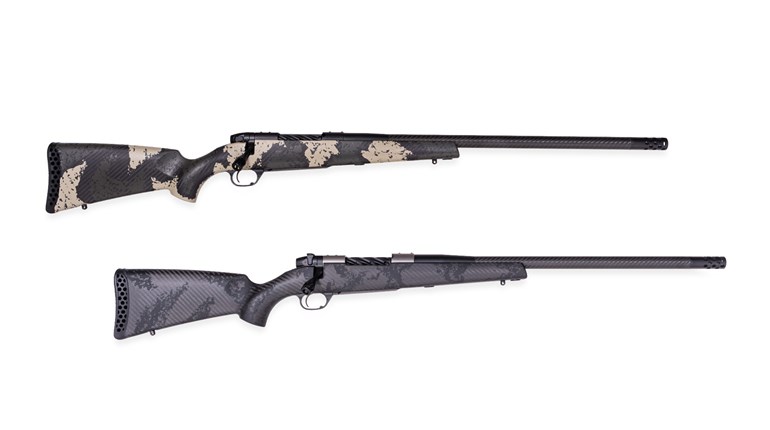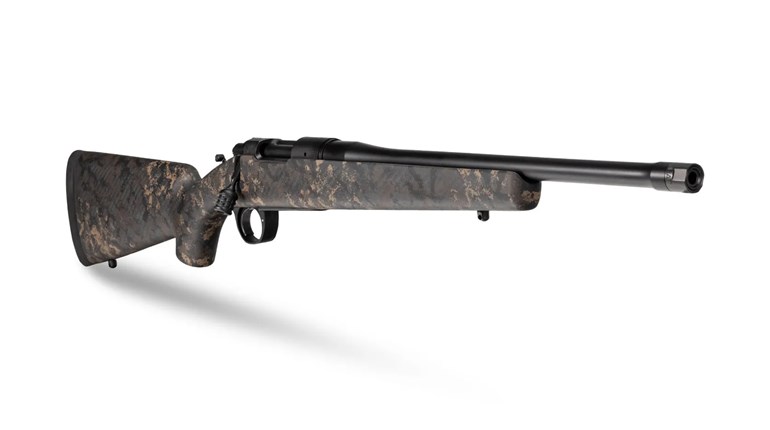If you were to survey a group of high-country hunters on the characteristics they appreciate most in a hunting rifle, light weight and long-range accuracy would likely top the list. When hunting in country where the possibility of a long shot is ever-present and the terrain tests your will every bit as much as your physical stamina, it only stands to reason you would want an easy-to-carry rifle that will drive tacks from several football fields away.
But while building a lightweight, accurate production rifle sounds like a no-brainer, it's often easier said than done. That's why I was intrigued when Weatherby announced its new Mark V Ultra Lightweight RC. The Ultra Lightweight name is appropriate, as the rifle weighs just 5.75 pounds in standard chamberings and 6.75 pounds in magnum offerings, the primary difference being the company's stout, nine-lug magnum bolt. For comparison, Weatherby's flagship Mark V Deluxe rifle with a magnum action weighs in at 8.5 pounds—certainly an acceptable weight for a wood-stocked magnum hunting rifle but still about a half pound more than an Ultra Lightweight RC outfitted with a 3X-9X-40mm riflescope and sling.
The rifle's greatest weight-savings come from a lightened aluminum bedding block and a thinner barrel profile. While the fluted barrel is the most obvious place where Weatherby trimmed weight, the company also pared precious ounces by widening and deepening the flutes on the bolt; removing metal from the top of the bolt sleeve, giving it a concave look; and fitting the rifle with a hand-laminated, raised-comb Monte Carlo composite stock.
The complaint usually voiced about lightweight rifles is they lack the heft to soak up recoil and often kick like mules. Having shot an Ultra Lightweight RC in .270 Wby. Mag. extensively in preparation for a spring black bear hunt in British Columbia, I can attest the rifle, at least in that caliber, is not unpleasant to shoot. It may be a different story with one chambered in .300 Wby. Mag., but recoil was certainly dampened by the cushy Pachmayr Decelerator pad. As a matter of full disclosure, however, I did end up with a version of the "Weatherby eyebrow" when the ocular housing of a Trijicon AccuPoint riflescope hammered my shooting glasses on a handful of occasions, bruising the bridge of my nose.
The other half of the equation for the dream backcountry setup—accuracy—is tied to the RC in the rifle's name, which stands for Range Certified. Weatherby guarantees these rifles will produce a three-shot group measuring less than an inch at 100 yards when used with "specified Weatherby factory or premium ammunition." In fact, each rifle is range-tested by Weatherby and shipped with a target signed by company president and CEO Ed Weatherby, certifying its sub-MOA accuracy. That target also includes other valuable information, such as the load used to achieve the group and a plethora of ballistic data.
Eager to put the sub-MOA guarantee to the test, I ran three brands of premium hunting loads through my sample Ultra Lightweight RC: Weatherby 130-grain Barnes TSX, Federal Premium 130-grain Trophy Bonded Tip and Norma 150-grain Oryx. All three loads proved to be more than accurate enough for hunting purposes, with the Oryx providing the smallest group of .66 inch, as well as the smallest three-group average of .99 inch. While the Oryx produced the only sub-MOA average for three, three-shot groups, the 1.06-inch average with the 130-grain Barnes TSX load was awfully close, especially considering the human element present in such a test. In my mind, the rifle lived up to its sub-MOA billing.
It's important to note the thin, fluted barrel, while providing valuable weight savings, may hinder accuracy during longer range sessions, as it tended to heat up very rapidly. To ensure consistent groups, I waited five minutes or more between shots to give the barrel time to cool. However, in a hunting situation, where shots are typically much more sporadic, barrel heating is not a concern.
With that said, the Ultra Lightweight RC has several features that aid accuracy. The Monte Carlo stock's raised comb allows for proper eye alignment with the scope, and the composite stock is bedded with a CNC-machined aluminum plate that stiffens the receiver area and provides a stable platform for securing the barreled action. The factory-tuned, adjustable, single-stage trigger breaks cleanly and predictably at 3.5 pounds, and the free-floated stainless steel barrel ends in a recessed target crown. The Mark V's signature 54-degree bolt lift, compared to the typical 90 degrees, also allows for faster cycling.
The rifle's manual safety, a two-position toggle at the rear of the receiver, is large and operates silently. The only downside is it locks the bolt, forcing you to take the rifle off "safe" to load and unload, a design that is counter-intuitive to gun safety. I would prefer a three-position safety like that found on Weatherby's Vanguard Series 2 rifles, or a two-position design that still allows the bolt to be worked while the rifle is on "safe."
In keeping with Weatherby's efforts to appeal to younger hunters and shooters, the Ultra Lightweight RC's composite stock features a matte brown gel-coat finish with spider-web accents throughout; they provide positive purchase in the absence of checkering. The blackened barrel has a matte finish to reduce glare. The bottom of the floorplate is engraved with the Range Certified logo, while the bottom of the trigger guard displays the Weatherby "flying W."
Weatherby is known for its high-velocity, flat-shooting magnums, and the Ultra Lightweight RC comes in five classic Weatherby calibers: .240 Wby. Mag., .257 Wby. Mag., .270 Wby. Mag., 7mm Wby. Mag. and .300 Wby. Mag. With a 26-inch-barreled, .270 Wby. Mag.-chambered Ultra Lightweight RC in hand, I was able to down my first black bear—a cinnamon specimen—in the timber blocks of central British Columbia.
A lightweight, accurate, flat-shooting rifle is an invaluable tool to the backcountry hunter, but that doesn't mean the Ultra Lightweight RC's usefulness is limited to rugged environs. With cartridge offerings ranging from .270 Win. to .300 Win. Mag. and the aforementioned Weatherby Magnums, the Ultra Lightweight RC is a rifle that would stand any hunter in good stead the world over.
Technical Specifications:
Type: bolt-action repeating centerfire rifle
Caliber: .270 Wby. Mag. (tested); other Weatherby Magnum, short- and long-action chamberings available
Barrel: 26"; stainless steel; 1:10" RH twist; free-floated, fluted, recessed target crown
Magazine: internal box with floorplate; 3+1 capacity
Trigger: single-stage, adjustable; 3.5-lb. pull weight
Sights: none; drilled and tapped for mounting optics
Safety: two-position toggle
Stock: raised-comb Monte Carlo composite; length of pull 13 5/8"
Metal Finish: matte black
Overall Length: 46 5/8"
Weight: 6.75 lbs.
MSRP: $2,400







































